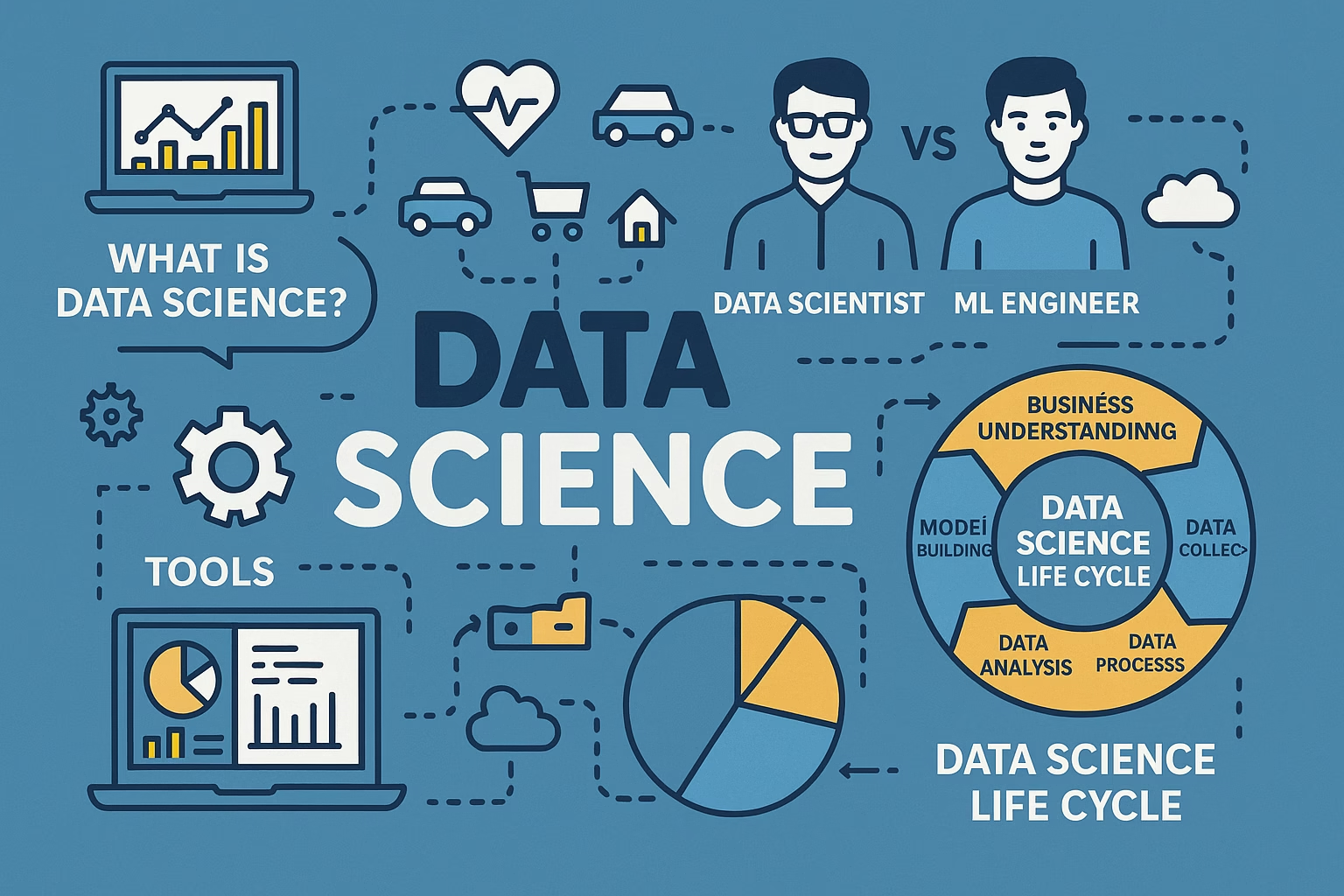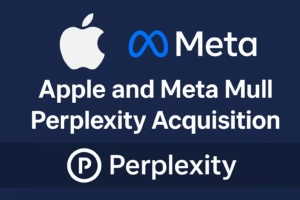What is Data Science? Uses, Roles, Tools & Life Cycle Explained

In today’s data driven world, Data Science has emerged as one of the most transformative and in demand fields across industries. From targeted advertising to fraud detection, from medical diagnosis to recommendation engines, data science powers the intelligent systems that are changing how we live and work.
But what exactly is data science? Where is it applied in real life? How does it differ from related roles like data analyst and machine learning engineer? And what tools and steps define a successful data science project?
Let’s explore all these questions in this comprehensive guide.
1. What is Data Science?
Data Science is a multidisciplinary field that uses statistical techniques, algorithms and machine learning to extract insights from structured and unstructured data. It combines mathematics, computer science, domain expertise and data visualization to solve real world problems and make data driven decisions.
The key objective of data science is not just to analyze data, but to find patterns, predict future outcomes and support business strategy using data as the core asset. Think of it as the process of turning raw numbers and information into actionable knowledge.
2. Where is Data Science Used in Real Life?
Data Science plays a pivotal role in various sectors, revolutionizing the way decisions are made and operations are carried out. Below are some real world applications:
1) Healthcare:
– Predictive analytics for disease outbreaks.
– Personalized medicine and treatment plans.
– Image recognition in radiology (X-rays, MRIs).
2) Finance:
– Credit scoring and fraud detection.
– Algorithmic trading and portfolio optimization.
– Customer segmentation and churn prediction.
3) Retail & E-commerce:
– Recommendation engines (e.g. Amazon, Netflix).
– Customer behavior analytics.
– Inventory and demand forecasting.
4) Transportation:
– Route optimization and GPS navigation (e.g., Google Maps)
– Autonomous driving systems
– Predictive maintenance of vehicles
5) Manufacturing:
– Quality control using sensors and data analysis.
– Predictive maintenance in equipment.
– Supply chain optimization.
6) Social Media & Marketing:
– Sentiment analysis on user comments and posts.
– Targeted advertisements.
– Trend analysis.
3. Data Analyst vs Data Scientist vs ML Engineer
| Role | Primary Focus | Key Skills | Tools |
|---|---|---|---|
| Data Analyst | Interprets existing data to generate insights. | Excel, SQL, Power BI, Tableau. | Microsoft Excel, SQL, Tableau. |
| Data Scientist | Builds models, makes predictions, discovers patterns. | Python, Statistics, Machine Learning. | Python, R, Scikit-learn. |
| ML Engineer | Designs scalable ML models for production. | Deep Learning, Deployment, APIs. | TensorFlow, PyTorch, Docker. |
4. Tools Used in Data Science
Data scientists rely on a suite of powerful tools throughout the data science process. Here is a breakdown of the most commonly used ones:
| Tool | Use | |
|---|---|---|
| Python | Widely used for data analysis, machine learning, and automation. | |
| R | Ideal for statistical computing and data visualization. | |
| Jupyter Notebook | Interactive coding and data storytelling. | |
| Pandas | Data manipulation and analysis. | |
| NumPy | Numerical operations and array handling. | |
| Scikit-learn | Machine learning library for classification, regression. | |
| TensorFlow | Deep learning and neural networks. | |
| Tableau | Visual analytics and business intelligence. | |
| Power BI | Enterprise data visualization. | |
| SQL | Database querying and management. | |
| Apache Spark | Big data processing and analytics. | |
| Git | Version control for collaboration. | |
| Docker | Containerizing and deploying models in production. |
5. Data Science Life Cycle
Every data science project typically follows a structured life cycle. Here is a breakdown of the 7 key stages in the Data Science Life Cycle:
1) Problem Definition:
This step involves understanding the business problem and defining clear objectives. The focus is on aligning stakeholders, identifying KPIs and setting the scope. Example: Predict customer churn for a telecom company.
2) Data Collection:
Gathering relevant data from internal databases, APIs, web scraping or third party providers. Tools Used: SQL, Python, Web APIs, Excel, Web Scraping libraries (e.g., BeautifulSoup)
3) Data Cleaning & Preparation:
Also called data wrangling, this is one of the most time consuming steps. It involves:
– Handling missing values.
– Removing duplicates.
– Normalizing data.
– Encoding categorical features.
– Tools Used: Pandas, NumPy, OpenRefine.
4) Exploratory Data Analysis (EDA):
In this phase, the data scientist explores and visualizes data to discover patterns, correlations and anomalies. Tools Used: Matplotlib, Seaborn, Tableau, Power BI.
5) Model Building:
Based on the problem type (classification, regression, clustering), appropriate ML models are selected and trained. Tools Used: Scikit-learn, XGBoost, TensorFlow, Keras, PyTorch.
6) Model Evaluation:
Evaluate model performance using metrics such as:
– Accuracy, Precision, Recall, F1 Score (Classification).
– RMSE, MAE (Regression).
– Tools Used: Scikit-learn, custom evaluation scripts in Python or R.
7) Deployment & Monitoring:
After validation, the model is deployed using tools like Flask, FastAPI, Docker, or cloud platforms (AWS, GCP, Azure). Continuous monitoring is set up to ensure performance stability. Tools Used: Docker, MLflow, Airflow, AWS SageMaker, Azure ML.
6. Conclusion
Data Science is not just a buzzword. It is a powerful discipline reshaping our world. Whether you are a business looking to unlock new insights or a professional aspiring to enter the field, understanding the real life applications, role differences, essential tools and the DS life cycle is crucial.
🔗 External Linking:
1) Scikit-learn
2) TensorFlow
3) Tableau
You Might Also Like


